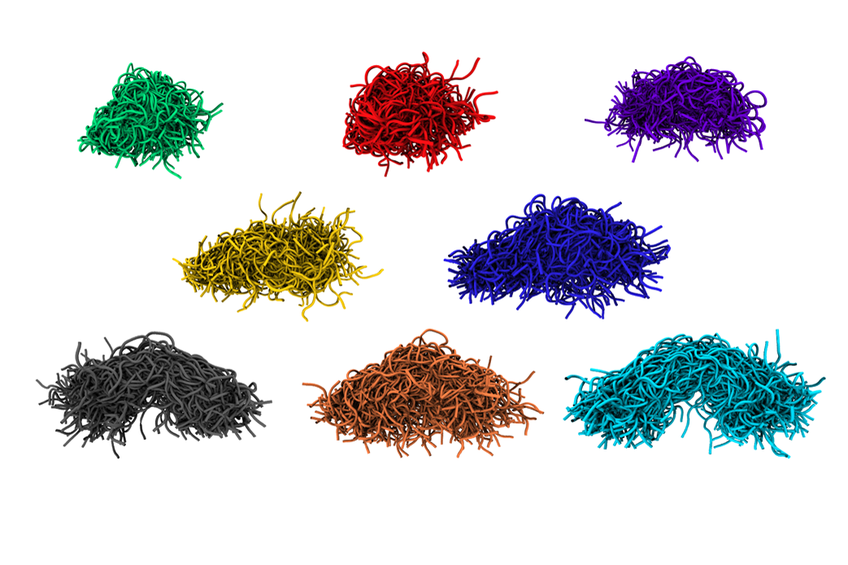
Force Field Development for Intrinsically Disordered Protein Ensembles
Collaborators: Zweckstetter Lab, Department of NMR-based Structural Biology; de Groot Lab, Computational Biomolecular Dynamics Research Group; MacKerell Lab, University of Maryland; Feig Lab, Michigan State University
Funding: Alexander von Humboldt Foundation
Intrinsically disordered proteins (IDPs) are notoriously challenging to study both experimentally and computationally. The structure of IDPs cannot be described by a single conformation but must instead be described as an ensemble of interconverting conformations. Atomistic simulations are increasingly used to obtain such IDP conformational ensembles.
We have compared the IDP ensembles generated by eight all-atom empirical force fields against primary small-angle X-ray scattering (SAXS) and NMR data. Ensembles obtained with different force fields exhibit markeddifferences in chain dimensions, hydrogen bonding, and secondary structure content. These differences are unexpectedly large: changing the force field is found to have a stronger effect on secondary structure content than changing the entire peptide sequence. The CHARMM 22* ensemble performs best in this force field comparison: it has the lowest error in chemical shifts and J-couplings and agrees well with the SAXS data. A high population of left-handed α-helix is present in the CHARMM 36 ensemble, which is inconsistent with measured scalar couplings. To eliminate inadequate sampling as a reason for differences between force fields, extensive simulations were carried out (0.964 ms in total); the remaining small sampling uncertainty is shown to be much smaller than the observed differences.
Our findings highlight how IDPs, with their rugged energy landscapes, are highly sensitive test systems that are capable of revealing force field deficiencies and, therefore, contributing to force field development.
The all-atom additive CHARMM36 protein force field was refined to improve accuracy in generating polypeptide backbone conformational ensembles for IDPs. The modified FF, CHARMM36m (C36m), was validated using a comprehensive set of 15 peptides and 20 proteins with a cumulative simulation time of more than 500 microseconds. The extensive validation simulations illustrate that the improved force field is suitable for MD simulations of both folded and disordered proteins.